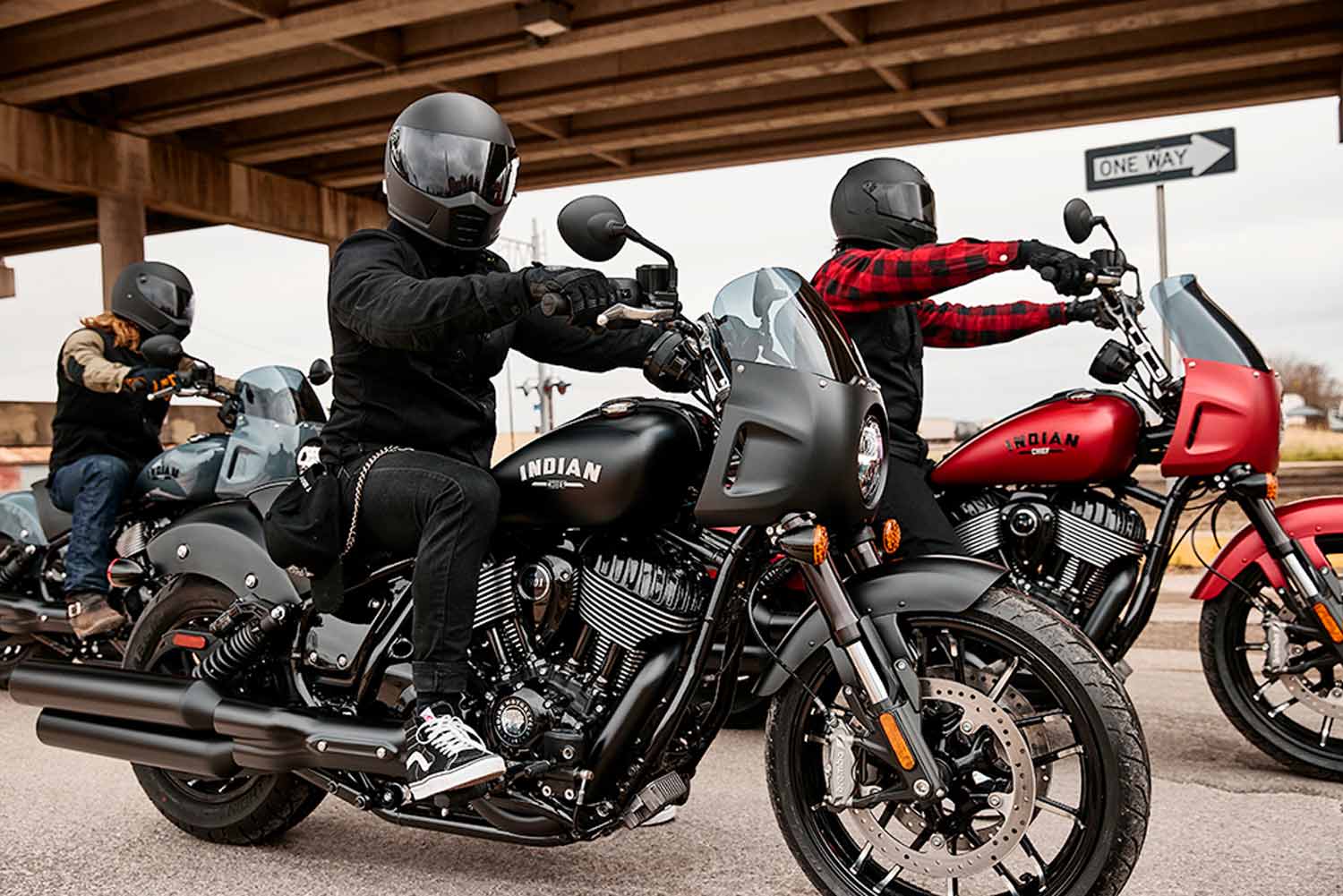Iconic Indian Motorcycle Models

Indian Motorcycle, a name synonymous with American motorcycling heritage, boasts a rich history filled with iconic models that have left an enduring mark on the world of two wheels. From the early days of pioneering innovation to the modern era of cutting-edge technology, Indian Motorcycles have consistently pushed the boundaries of design and performance. This journey through time reveals the enduring legacy of these remarkable machines and the riders who have made them legends.
The Indian Scout, Indian motorcycle
The Indian Scout, first introduced in 1920, was a revolutionary motorcycle designed for speed and agility. Its lightweight frame and powerful engine made it a formidable competitor on the racetrack and a popular choice for everyday riding. The Scout’s iconic design, characterized by its streamlined lines and distinctive fuel tank, has remained a symbol of Indian Motorcycle’s commitment to both style and performance.
- Design Features: The Indian Scout was known for its lightweight, single-cylinder engine, a departure from the V-twin engines common in other motorcycles of the era. Its streamlined design, including a distinctive teardrop-shaped fuel tank, contributed to its aerodynamic efficiency and enhanced its speed.
- Technological Advancements: The Scout’s engine was a marvel of engineering for its time. It featured a lightweight, single-cylinder design that allowed for a high power-to-weight ratio. The engine was also equipped with a new type of carburetor that provided improved fuel efficiency.
- Notable Riders: The Indian Scout was ridden by numerous legendary racers, including Joe Petrali, who won the 1922 and 1923 National Championship on a Scout. The Scout’s popularity extended beyond racing, as it was also a favorite among motorcycle enthusiasts for its versatility and affordability.
The Indian Chief
The Indian Chief, first introduced in 1922, quickly became an icon of American motorcycling. Its powerful V-twin engine, coupled with its robust construction, made it a reliable and comfortable ride for both long journeys and daily commutes. The Chief’s classic design, featuring a distinctive chrome-plated fuel tank and a prominent front fender, has remained a timeless symbol of American motorcycle culture.
- Design Features: The Indian Chief was known for its powerful, V-twin engine, which provided ample torque for both cruising and hauling heavy loads. Its robust frame and suspension ensured a comfortable ride, even on rough roads.
- Technological Advancements: The Chief’s engine was a significant technological advancement, featuring a larger displacement than previous Indian models. Its design incorporated a number of innovations, including a new type of valve system that improved engine efficiency.
- Notable Riders: The Indian Chief was ridden by many notable figures, including the legendary actor Marlon Brando, who was known for his love of motorcycles. The Chief’s popularity extended to a wide range of riders, from everyday commuters to long-distance travelers.
The Indian Roadmaster
The Indian Roadmaster, introduced in 2014, is a modern interpretation of the classic touring motorcycle. It features a powerful, liquid-cooled engine, advanced technology, and luxurious amenities, making it the ultimate choice for long-distance travel. The Roadmaster’s design is a perfect blend of classic Indian styling and modern engineering, with a distinctive chrome-plated fuel tank, a comfortable rider seat, and a spacious trunk.
- Design Features: The Indian Roadmaster is designed for comfort and convenience on long journeys. It features a spacious trunk, a comfortable rider seat, and a number of other amenities, such as cruise control and heated grips.
- Technological Advancements: The Roadmaster is equipped with a powerful, liquid-cooled engine that provides ample power for both highway cruising and city riding. It also features a number of advanced technologies, including ABS brakes, electronic cruise control, and a touchscreen infotainment system.
- Notable Riders: The Indian Roadmaster has become a popular choice for touring enthusiasts who value comfort and performance. It has been featured in numerous motorcycle magazines and has been praised for its handling, power, and luxury features.
| Model | Year Introduced | Engine | Design Features | Historical Significance |
|---|---|---|---|---|
| Indian Scout | 1920 | Single-cylinder | Lightweight, streamlined design, teardrop-shaped fuel tank | Revolutionized motorcycle design, popular for racing and everyday riding |
| Indian Chief | 1922 | V-twin | Powerful engine, robust construction, chrome-plated fuel tank | Became an icon of American motorcycling, popular for touring and commuting |
| Indian Roadmaster | 2014 | Liquid-cooled V-twin | Spacious trunk, comfortable rider seat, advanced technology | Modern interpretation of the classic touring motorcycle, designed for long-distance travel |
The rumble of an Indian Motorcycle, a symphony of chrome and steel, echoes in the stillness of the evening. It’s a sound that speaks of freedom, of open roads and endless possibilities. As the sun sets, casting long shadows across the dusty garage floor, I find myself drawn to a worn, grey leather accent chair , its faded fabric whispering tales of past journeys.
It’s a place where dreams are born, where the spirit of the road lingers, and where the echoes of the Indian’s roar reverberate in the quiet moments of reflection.
The rumble of an Indian Motorcycle, a symphony of power and nostalgia, echoes through the empty garage. Its chrome gleams, a testament to bygone days of open roads and endless journeys. A lone, worn ikea white leather chair sits in the corner, a silent observer to the machine’s slumber.
The chair, like the motorcycle, holds the weight of memories, whispers of journeys taken and dreams yet to be fulfilled. The scent of leather and gasoline lingers in the air, a reminder of a past that whispers in the wind, promising adventure and freedom.